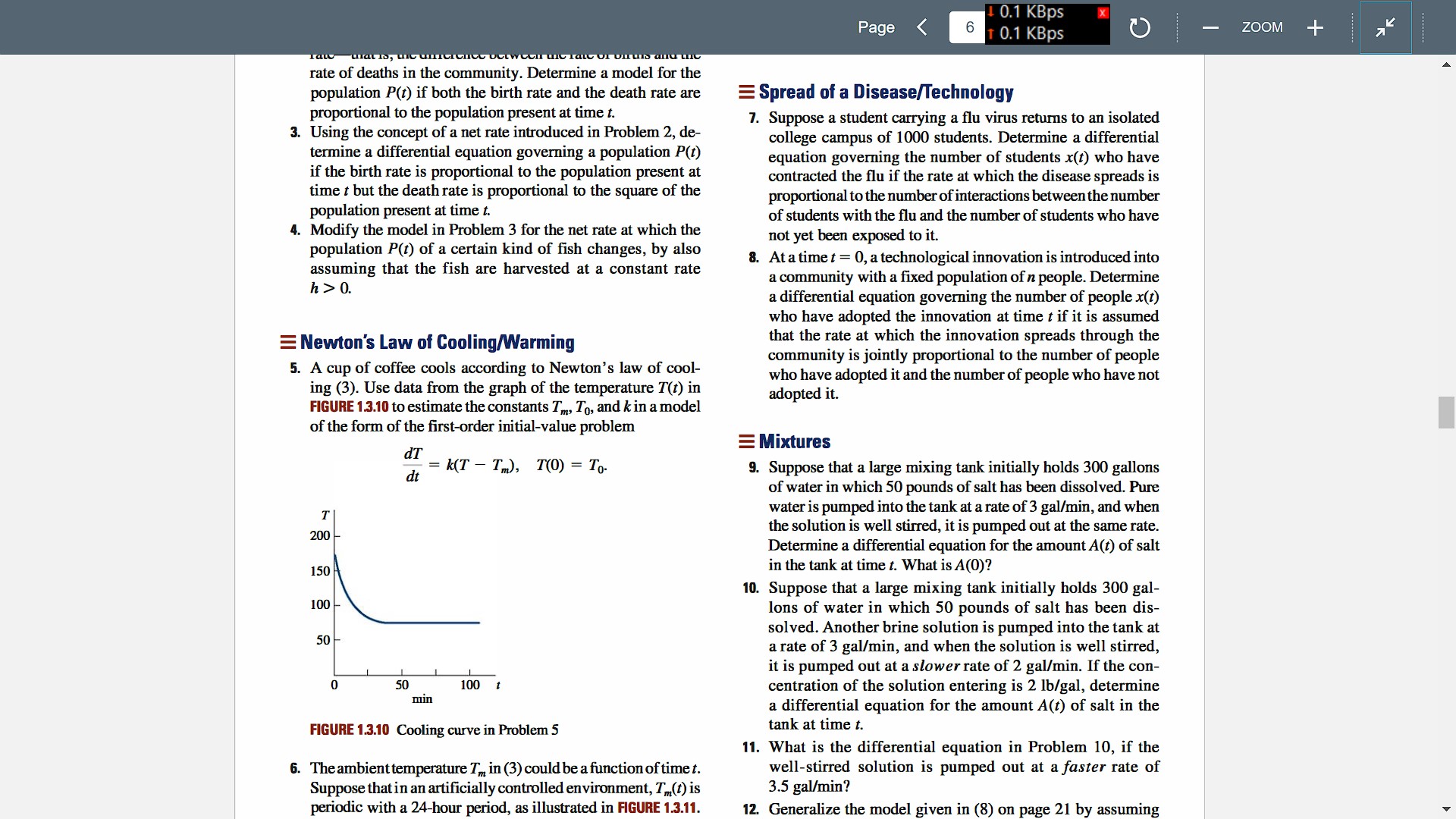Please refer to the que 7 in the Image
Zill and Wright, Advanced Engineering Mathematics, 5th edition
1.3 - Problem 7
4 0.1 KBps X Page 6 1 0.1 KBps ZOOM + rate of deaths in the community. Determine a model for the population P(t) if both the birth rate and the death rate are Spread of a Disease/Technology proportional to the population present at time t. 7. Suppose a student carrying a flu virus returns to an isolated 3. Using the concept of a net rate introduced in Problem 2, de- college campus of 1000 students. Determine a differential termine a differential equation governing a population P(t) equation governing the number of students x(t) who have if the birth rate is proportional to the population present at contracted the flu if the rate at which the disease spreads is time t but the death rate is proportional to the square of the proportional to the number of interactions between the number population present at time t. of students with the flu and the number of students who have 4. Modify the model in Problem 3 for the net rate at which the not yet been exposed to it. population P(t) of a certain kind of fish changes, by also assuming that the fish are harvested at a constant rate 8. At a time t = 0, a technological innovation is introduced into h >0. a community with a fixed population of n people. Determine a differential equation governing the number of people x(t) who have adopted the innovation at time : if it is assumed Newton's Law of Cooling/Warming that the rate at which the innovation spreads through the 5. A cup of coffee cools according to Newton's law of cool- community is jointly proportional to the number of people who have adopted it and the number of people who have not ing (3). Use data from the graph of the temperature T(t) in adopted it. FIGURE 1.3.10 to estimate the constants Tm, To, and k in a model of the form of the first-order initial-value problem Mixtures dT dt .= K(T - Tm), T(0) = To- 9. Suppose that a large mixing tank initially holds 300 gallons of water in which 50 pounds of salt has been dissolved. Pure T water is pumped into the tank at a rate of 3 gal/min, and when 200 the solution is well stirred, it is pumped out at the same rate. Determine a differential equation for the amount A(t) of salt 150 in the tank at time t. What is A(0)? 10. Suppose that a large mixing tank initially holds 300 gal- 100 lons of water in which 50 pounds of salt has been dis- solved. Another brine solution is pumped into the tank at 50 a rate of 3 gal/min, and when the solution is well stirred, it is pumped out at a slower rate of 2 gal/min. If the con- 50 100 centration of the solution entering is 2 1b/gal, determine min a differential equation for the amount A(t) of salt in the FIGURE 1.3.10 Cooling curve in Problem 5 tank at time t. 11. What is the differential equation in Problem 10, if the 6. The ambient temperature Tm in (3) could be a function of time t. well-stirred solution is pumped out at a faster rate of Suppose that in an artificially controlled environment, Tm(t) is 3.5 gal/min? periodic with a 24-hour period, as illustrated in FIGURE 1.3.11. 12. Generalize the model given in (8) on page 21 by assuming







